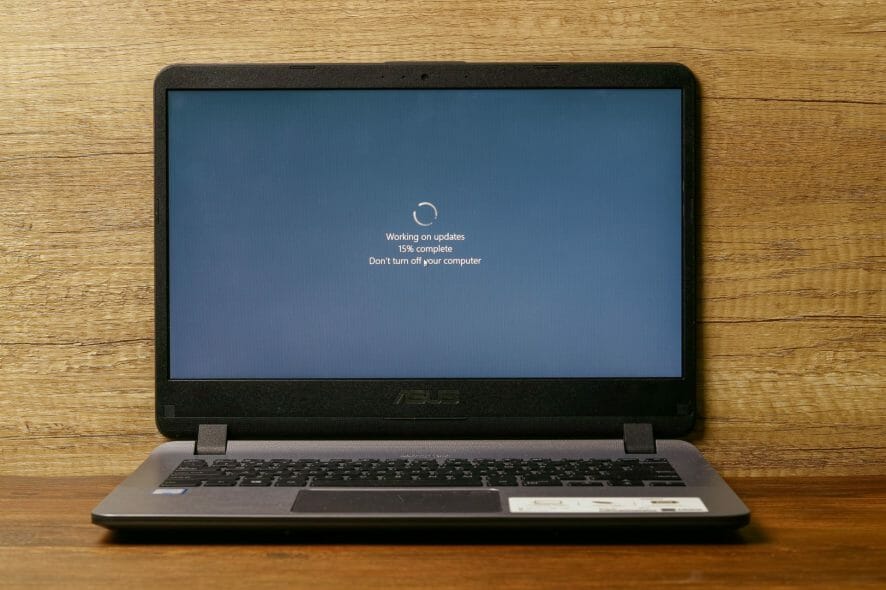KB5003212 brings fixes for geo-location info and phone muting
5 min. read
Published on
Read our disclosure page to find out how can you help Windows Report sustain the editorial team Read more
Key notes
- Microsoft released to the public a preview version of KB5003212, for Windows 10 version 1909.
- This will tackle the issue that prevents users from receiving geographic location information.
- Not being able to mute a phone call while transferring it will also get fixed with KB5003212.
- Read about the other important fixes and improvements that will be added, in this article.

More than a week after Windows 10 version 1909 reached the end of service for devices running the Home, Pro, Pro for Workstation, Nano Container, and Server SAC editions, Microsoft releases a new cumulative update.
That being said, KB5003212 is only a preview version of the update that is presently available only as an optional install, before a much wider release.
KB5003212 fixes the geographic location issue
According to Microsoft, this update will focus, among others, on fixing an issue that prevents users from receiving geographic location information.
Another problem that the cumulative update will tackle is related to muting a phone call when you transfer the call. This will prove useful for users who are in constant communication with each other or with clients.
KB5003212 will also apply a fix to the issue that currently prevents a touch device from working as a serial mouse in multiple monitor situations.
As far as know issues, this update doesn’t seem to have many, except a recurring problem with lost certificates. as well as the issue with Microsoft 365 desktop client apps, which is easily fixable.
Crucial improvements and fixes available with KB5003212
Even though this is not a security update, it includes a wide variety of important fixes and improvements to some of the Windows 10 known issues.
Here are some of them:
- Addresses an issue with the just-in-time (JIT) behavior of jscript9.dll.
- Addresses an issue that might cause a device to stop responding during hybrid shutdown.
- Addresses an issue that prevents a touch device from working as a serial mouse in multiple monitor situations.
- Addresses an issue in Safe Mode that prevents users from signing in if Web Sign-in is enabled.
- Addresses an issue in Active Directory (AD) Admin Center that displays an error when it lists many organizational units (OU) or container objects and PowerShell Transcription is enabled. The error message is, “Collection was modified after the enumerator was instantiated”.
- Addresses an issue with devices that were configured using mobile device management (MDM) RestrictedGroups, LocalUsersAndGroups, or UserRights policies. These devices incorrectly continue to receive the policy after you use MDM to remove the configuration profile that has the policy. As a result, users of the affected devices might have incorrect group memberships and UserRights assignments or other symptoms. This issue occurs after installing Windows updates from October 20, 2020 and later.
- Addresses an issue with the Autopilot Reset command taking too long to process after it has been sent.
- Addresses an issue that might cause application installers to fail. This issue occurs when you enable Address Space Layout Randomization (ASLR) using the PowerShell command “set-processmitigation -system -enable forcerelocateimages”.
- Addresses an issue that fails to apply BitLocker encryption automatically using a Group Policy. This issue occurs on external drives that have a master boot record (MBR) active boot partition.
- Addresses a memory leak issue in PKU2U that causes cluster nodes to run out of memory.
- Addresses an issue that fails to register a DNS update to an A record and a PTR when Azure virtual machines update against corporate DNS zones.
- Addresses an issue that prevents users from receiving geographic location information even when all the geolocation UI settings are enabled correctly, and the device contains a location sensor.
- Addresses an issue with muting a phone call when you transfer the call.
- Addresses an issue with per-user profiles that occurs after you set the Group Policy Object “Allow everyone to create all user profiles” to “Disabled”. After restarting the device, Wi-Fi doesn’t automatically reconnect when using per-user profiles.
- Addresses an issue that prevents a task from working correctly when you set the condition “Start only if the following network connection is available” for the task.
- Addresses a memory leak that might occur in some Remote Desktop screen sharing scenarios.
- Addresses an issue with the PerfMon API that might cause handle leaks, which slow performance.
- Updates Delivery Optimization to accept a custom port in the DOCacheHost configuration.
- Addresses an issue that might cause endless replication when you promote a new domain controller and the Active Directory Recycle Bin feature is enabled.
- Addresses an issue that sporadically prevents the Resource Host Subsystem (RHS) from registering network name resources in the Domain Name System (DNS). As a result, Event ID 1196 appears.
- Addresses a timing issue that might cause a RemoteApp to intermittently duplicate characters that were entered on the local keyboard or pasted from the Windows clipboard.
If you are using the Windows Update option in your PCs settings menu, the latest SSU will be provided automatically.
In order to get the standalone package for the latest SSU, you can search for it in the Microsoft Update Catalog.
What version of WIndows 10 are you using? Let us know all about it in the comments section below.








